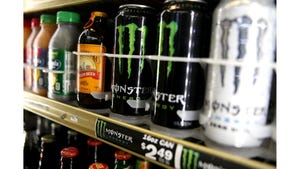How to Design a Loss-in-Weight Feeder
April 26, 2016

A loss-in-weight feeder is the state of the art today for providing gravimetric (weighing) feeding of a bulk solid. In previous articles I discussed volumetric feeding, which relies on a certain volume/unit time (cu ft/hr or cu m/hr) to maintain feed rate accuracy. To increase discharge rate, simply increase the speed of the feeder. However, even though a properly designed volumetric feeder can achieve feed rate accuracy of ±2%, sometimes greater feed rate accuracy is required.
A gravimetric loss-in-weight feeder simply weighs material to achieve a required feed rate or batch size. Depending on the feeder type, a loss-in-weight feeder can operate in continuous or batch mode. The continuous feeder controls the weight (not volume) of material fed over time -- typically in lb or kg of material per hour. The batch feeder simply controls the weight of product, typically in lb or kg, that is fed to a batch process such as a blender or box.
When properly selected, a loss-in-weight feeder can sometimes obtain feed rate accuracy of ±0.25%. You can also use it when your material's bulk density varies or when you simply need to record the weight of material used in your process. One drawback is that a gravimetric feeder typically has a higher cost than a volumetric feeder.
As stated earlier, loss-in-weight feeder is the state of the art today. A loss-in-weight system consists of:
• A mass flow hopper (to ensure reliable material flow)
• A volumetric feeder (screw, belt, rotary valve, etc.)
• A scale (load cells to provide weighments)
The system does exactly what its name implies, as it measures the loss in weight of material discharged from the system. As such, it can be used both in continuous and batching systems. It can even be used for liquids, simply by replacing the feeder with a pump. A continuous loss-in-weight system is shown in photo #1, while photo #2 shows a batch system that incorporates a bulk mode (fast feed) and a trim mode (slow feed to top off the batch).
A controller is required to receive the weighment signal from the load cells or scale. The controller then compares the weighment to the set point (required discharge rate or weight). The controller then communicates with the feeder to speed it up or slow it down in order to achieve the set point rate or weight.
A refill device is required to quickly refill the loss-in-weight hopper. The refill device must fill the weigh hopper quickly as it switches to volumetric mode during refill. The hopper obviously cannot be weighing while it is refilling. When the bin is filled, it switches back to gravimetric mode. Some systems are available with "no freeze" designs. One bin and feeder discharges while another is being filled and these can easily be switched back and forth. Screws, belts, rotary valves, and louvered or vibratory pan feeders can be used to control discharge.
After the refill device feeds material into the weigh hopper, material flows from the hopper through the feeder to discharge your product at a controlled rate. The load cells continuously send weight readings to the controller and the material in the weigh hopper is measured as a loss in weight/unit time. It compares the calculated loss-in-weight with the set point and directs the feeder to adjust its rate.
Joseph Marinelli is a consulting engineer and president of Solids Handling Technologies, Fort Mill, SC. He has been providing testing and consulting services since 1972. As a former consultant with Jenike & Johanson Inc., he has years of experience testing powders and designing bins and feeders for reliable flow. He lectures frequently on the topic of powder handling and has published several papers, including an article in a chemical encyclopedia and two in a food powder book. For more information, call 803-802-5527 or email Joe at [email protected].
Get more information or register for the International Powder & Bulk Solids Conference & Exhibition, May 3-5, 2016
For related articles, news, and equipment reviews, visit our Feeders Equipment Zone
Click here for a List of Feeder Manufacturers
You May Also Like


